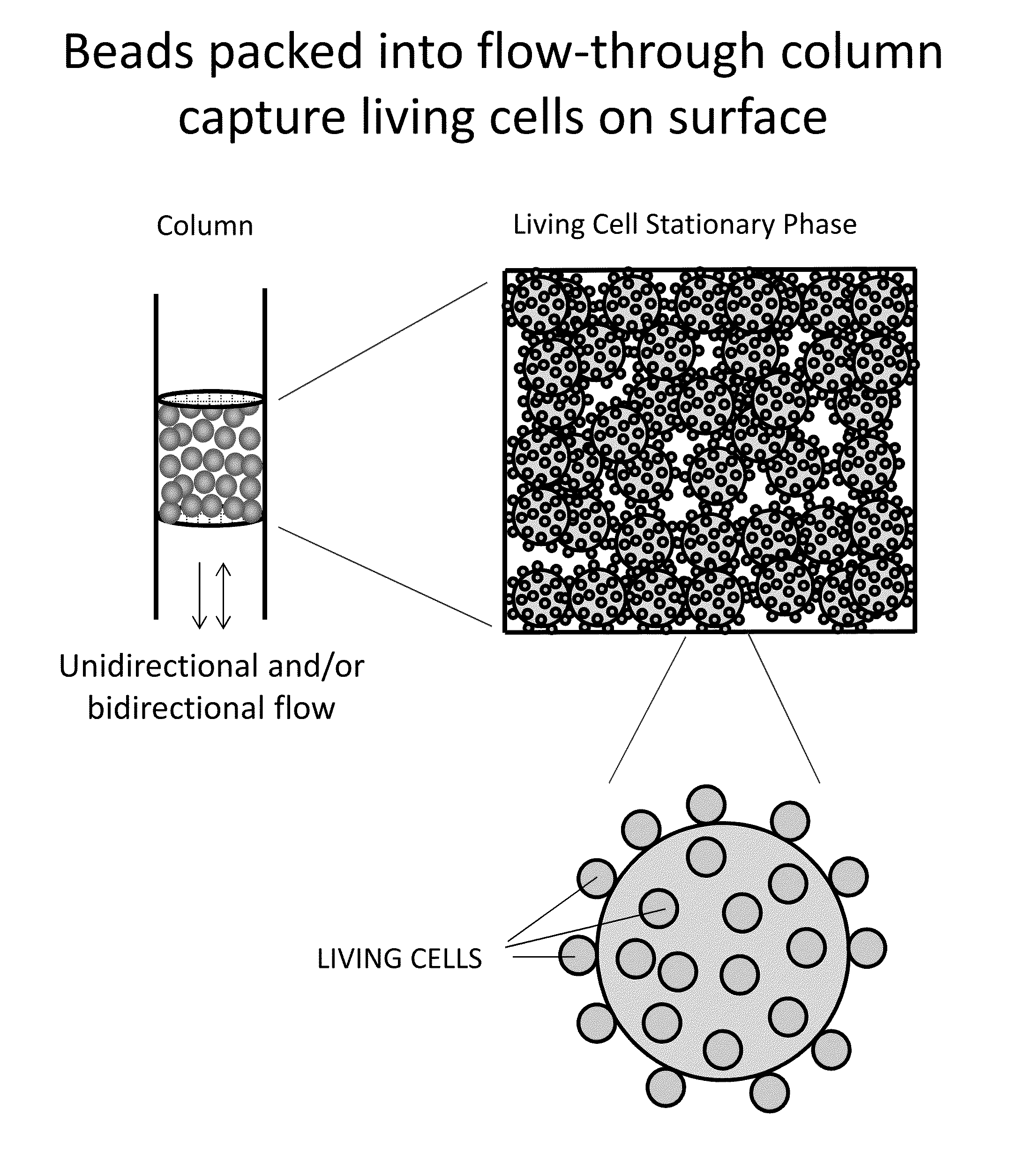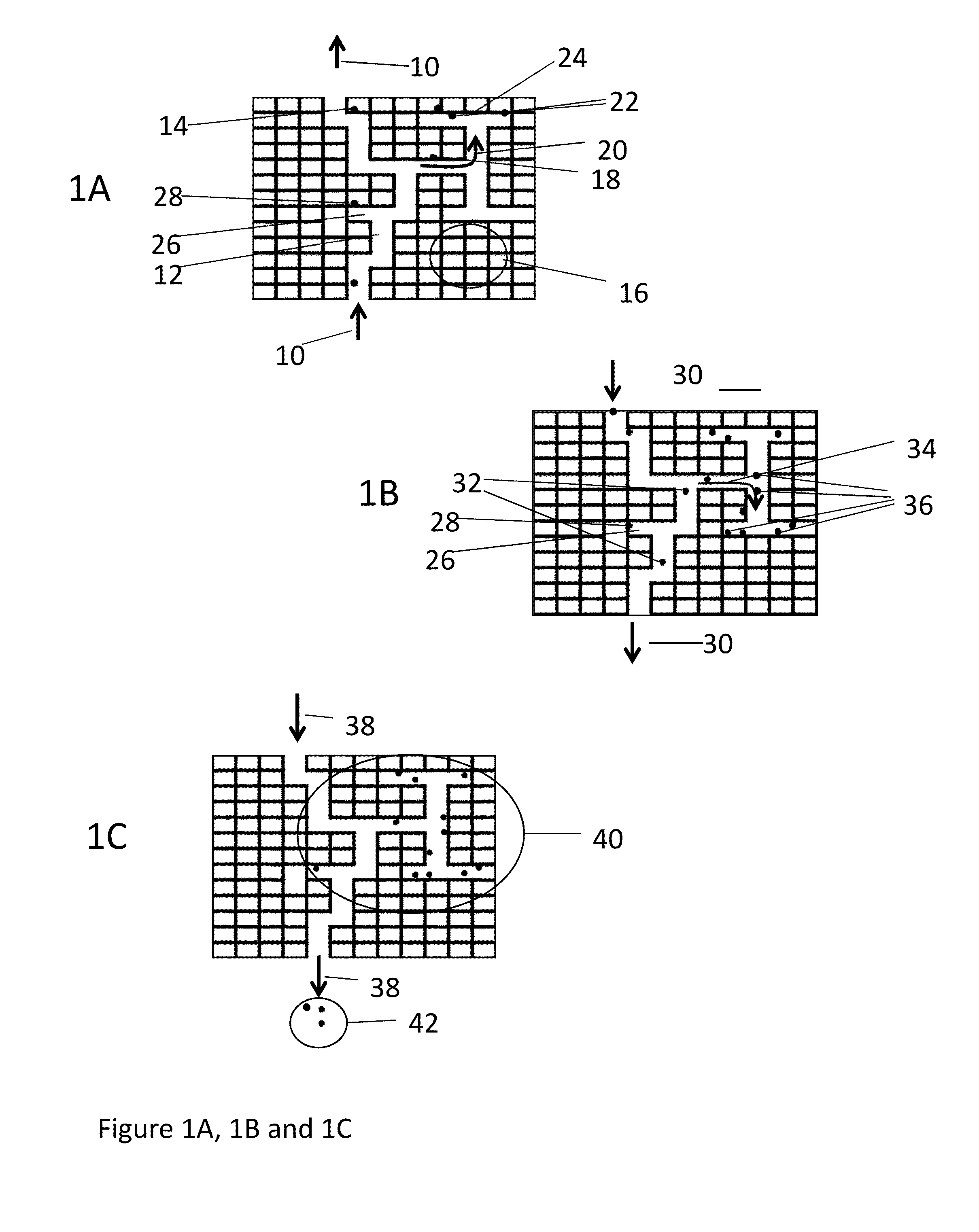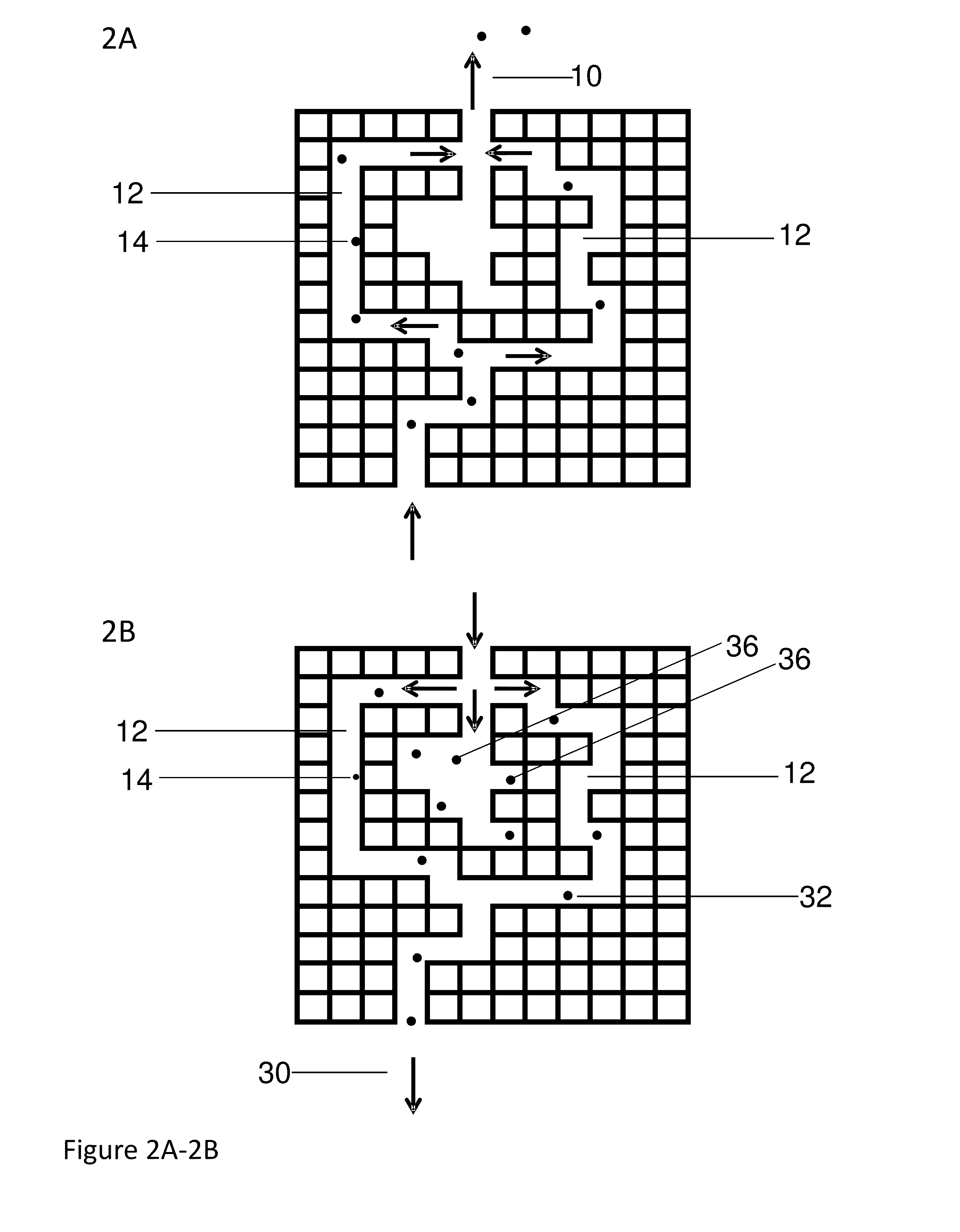Isolation, Detection and Use of Biological Cells
a biological cell and detection method technology, applied in the field of biological cell isolation, detection and use, can solve the problems of inability to detect and detect contaminants from surrounding areas, and inability to penetrate the device or enter the liquid phase, so as to achieve rapid and effective removal of non-specific background cells and matrix molecules, high purity
- Summary
- Abstract
- Description
- Claims
- Application Information
AI Technical Summary
Benefits of technology
Problems solved by technology
Method used
Image
Examples
example 1
Sperm is Captured, Separated from Cells and DNA Analysis is Performed
[0548]In forensics, it is often desired to obtain DNA profiles from old stains, body fluid samples and other possible samples. The primary goal is to preferentially separate sperm from vaginal cells and other materials, a necessity for DNA analysis in rape cases, for example.
[0549]DNA aptamers which are short strands of DNA were developed by SomaLogic (Boulder, Colo.) to bind sperm heads, and used to both identify and immobilize the sperm heads for purification and later DNA analysis. These aptamers are used in a column bed system of the invention with biotin and Streptavidin linkers to selectively capture sperm cells. The aptamer sequences bind preferentially to both the outer protein membrane and the stripped perinuclear calyx of sperm cells in the presence of non-sperm epithelial cells.
[0550]Sperm cells (research vials, prepared by density gradient centrifugation and subsequent washing) are purchased from Califo...
example 2
Antibody Purification of Sperm
[0553]This example uses antibodies rather than aptamers to capture sperm cells in the presence of other cells. A cocktail of antibodies specific to sperm cell surface antigens are anchored to Protein A affinity beads packed into a column of the invention. The specificity of antibody-antigen binding selectively captures sperm cells from samples that are comprised of a mixture of sperm cells, white blood cells, epithelial cells, cell lysates, etc. Alternatively, the antibodies are added to the sample mixture first and then captured by the column. After washing with a neutral buffer, the sperm cells are eluted with low pH or high pH buffers and the DNA is analyzed.
[0554]The antibodies may be tagged with His tags for example. In this case, IMAC beads may be packed into columns of the invention to capture the antibodies which are used in turn, to capture the sperm. In this case, the antibody sperm combination may be eluted, the cell lysed and the DNA analyze...
example 3
Circulating Tumor Cells
[0558]A cancerous tumor sheds small numbers of tumorous cells into its immediate vasculature. These cells then make their way into the circulatory system, and are thus called circulating tumor cells (CTCs). CTC information is used cancer prognosis, therapy monitoring and metastasis research.
[0559]Circulating tumor cells (CTCs) are important targets for study to understand, diagnose, and treat cancers. However, CTCs are found in blood at extremely low concentrations which makes isolation, enrichment and characterization challenging. A typical concentration in a human cancer patient is approximately 1-100 CTCs per mL of blood.
[0560]CTC purification with the columns of the invention capture many or most of the CTCs in the blood sample (high capture efficiency) and are selective with very few other cells accidently isolated. The samples are processed with sufficient speed and without battering of the cells so that cells remain viable in many cases.
[0561]The column...
PUM
| Property | Measurement | Unit |
|---|---|---|
| diameter | aaaaa | aaaaa |
| volumes | aaaaa | aaaaa |
| volumes | aaaaa | aaaaa |
Abstract
Description
Claims
Application Information
 Login to View More
Login to View More - R&D
- Intellectual Property
- Life Sciences
- Materials
- Tech Scout
- Unparalleled Data Quality
- Higher Quality Content
- 60% Fewer Hallucinations
Browse by: Latest US Patents, China's latest patents, Technical Efficacy Thesaurus, Application Domain, Technology Topic, Popular Technical Reports.
© 2025 PatSnap. All rights reserved.Legal|Privacy policy|Modern Slavery Act Transparency Statement|Sitemap|About US| Contact US: help@patsnap.com



